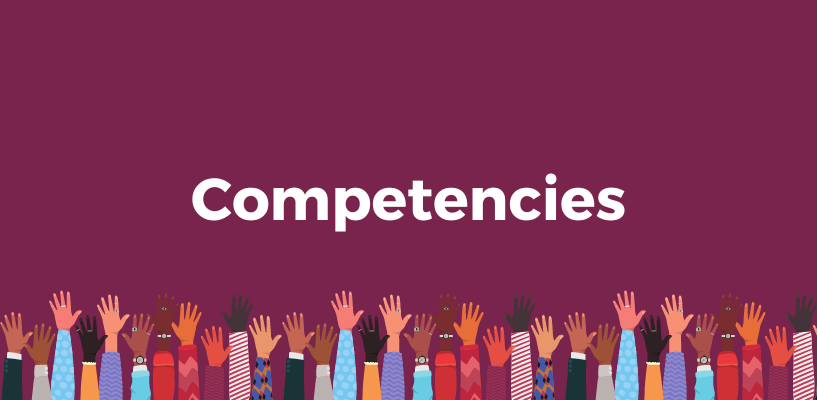Quick Guide
Competencies

This section organizes all resources by the 12 competencies of CDPH's Organizational Assessment for Equity Infrastructure. This allows you to easily explore resources by the topic you choose to prioritize within your LHJ, organization, or initiative.
Click on a competency to see all its resources further organized by development level and resource type and read an implementation success story via the LHJ spotlight.
| Competency | Definition |
|---|---|
| Diversity and Inclusion | Recruit, hire, and develop a professional workforce that reflects the populations served and communities facing health inequities. |
| Dedicated Equity Staff | Hire staff dedicated to equity and establish staff capacity centered on equity. |
| Training, Development, and Support | Provide opportunities for staff to learn and discuss equity topics and incorporate their learning into practice. |
| Structures to Build Collaboration | Establish vehicles and venues to support/develop meaningful collaboration. |
| Community Based Organization & Resident Engagement | Build trust with the community/residents through transparent and inclusive communication, respectful co-learning, and leveraging community expertise to inform equitable practices. |
| Partner Across Sectors | Collaborate with other agencies and organizations across sectors to amplify equity and address the root causes related to the environmental, social, and economic conditions which impact health (social determinants of health). |
| Organizational Commitment | Organizational commitment to equity (race/ethnicity, disability status, age, socioeconomic status, etc.) is seen and felt internally and externally; reinforced in culture and communication |
| Funding and Resource Allocation | Strategically direct staff resources and funding to build organizational capacity to address equity and to focus resources on ways that benefit communities experiencing greatest inequities. |
| Embed Equity Principles | Integrate equity principles throughout the organization's programmatic and operational plans, policies, and procedures; including budget, human resources, procurement, data, and decision-making. |
| Data Collection and Usage | Collect data to reflect the experience of communities impacted by inequities and make it accessible to the community for shared use in policy and program planning. |
| Shared Analysis | Conduct shared analysis with staff, multisector partners, and community/residents to explore the root causes of problems and co-develop strategies and solutions. |
| Inclusive Decision-Making | Include community members/residents and stakeholders in key decisions about program, policy planning, and evaluation activities. |


